One of the most important instruments for producing rock, pop and country music are guitars. In fact, a band alone can be formed by just having guitars, drums and bass (for example it can become “legendary” like Led Zeppelin). Because of this importance, it has been used frequently to produce songs; however some difficulties are encountered during the mixing process.
This tutorial will illustrate how you can implement EQ on guitar to get the best sound for rock, country and pop music. Examples of a common EQ problem with guitar are conflicting frequencies with vocals and bass guitar.
Guitars have pretty wide frequency spectrum characteristics. Acoustic guitars particularly the nylon guitars have significant bass response, while steel string and electric guitars have significant middle to high frequency content. See sample frequency spectrum below for acoustic guitar:
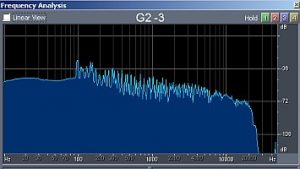
It is because of this wide frequency spectrum characteristic that guitars are often the cause of mixing clarity issues.
For example looking at the above screenshot, the guitar does have significant middle frequencies (500Hz to 3000Hz). Since vocals also have a lot of middle frequency content, they tend to clash together in the mix resulting to clarity issues. Implementing proper EQ settings on the guitar can solve this problem.
Bad guitar recording can add more problems in the mix
Before you will learn how to EQ guitar; the most important requirement before you can mix guitars is that it should be properly recorded, clean (no noise) and of course “in tune”.
It is one of the important rules in audio mixing that you cannot fix recording related issues. If the issue is recording related, you should do a re-recording instead of fixing the problems in the mix. It is highly important that you understand how to record your guitars properly. You can refer to the following recommended tutorials:
DI method for clean sound– illustrate an important technique on how to get a clean guitar sound using DI technique (connecting your guitars directly to the audio interface) or using a guitar amplifier.

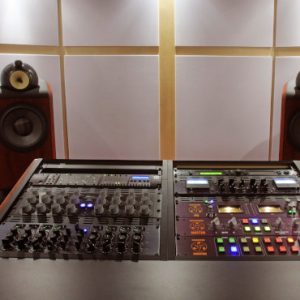
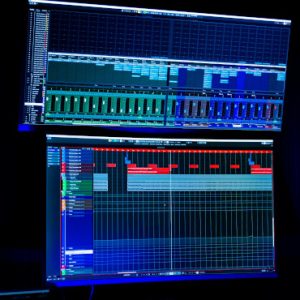
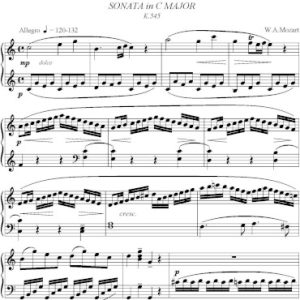
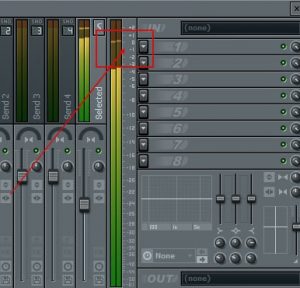
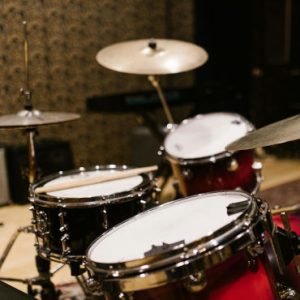
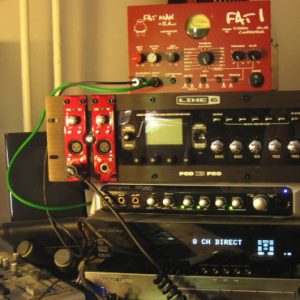
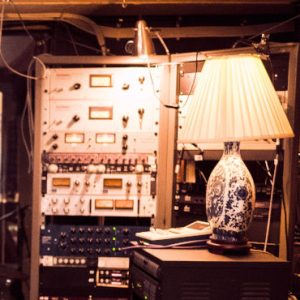

11 Responses
Hi Bradley,
When mixing live performances, I tend to simplify the EQ as much as possible with these settings:
Guitars: high pass filter cut at 200Hz, Cut -6dB at 3000Hz, Cut -3dB at 800Hz
Vocals: high pass filter cut at 200Hz, Boost 3dB at 3000Hz
Kick: Cut -9dB at 50Hz Q = 1.4, Boost 6dB at 100Hz, Q=1.4 Cut -6dB at 400Hz, Q= 2.0
Bass: Cut -9dB at 100Hz Q=1.4
Then tweak the volume during the rehearsal, as you can see, you need a mixer and a parametric equalizer to get the best sound.
Well, I am completely befuddled with mixing. During recording you can just keep trying till you get it right, but in a live application I pull my hair out. During practices I try like the devil to get it right, but for the sake of time, I just get on with practice. Other than guitar technique, what do I do???:( I primarily play a mix of rock and country if that means anything. Some of my recordings are on my myspace which is .com/bradleysherrer if you can give me tips and pointers. I will be greatful for any and all help. Thanks in advance
Hi Leo,
Good to know you are making some positive progress.This tutorial can help you understand on the topics of “normalization”: https://www.audiorecording.me/how-to-maximize-volume-in-audio-recording.html
Hi Emerson, thanks for the quick reply.
I’ve read your posts on all drum instrument mixing, once I’ve finished programming all my drum tracks I’ll try to implement all your suggestions.
Another question for you, what does normalization do? In cool edit pro the normalization option says “normalize ‘to’ (fill in numbers) db, but in your tutorial says to “normalize ‘at’ (certain) db, is this the same thing? Like i said, I’m very new at all this hope you don’t mind the constant trivial questions. Thanks again dude, cheers…
Hi Leo,
Yes of course, once the drum tracks created by fruityloops are in placed in the software mixing session project, you still need to mix the drums in adjust the panning and EQ. So that it will fit with the rest of the instruments(like vocals, guitars and bass).
Below are the important tutorials written about mixing drums (snare, kick and hi hats):
https://www.audiorecording.me/kick-drum-eq-settings-and-compression.html
https://www.audiorecording.me/snare-drum-eq-compression-and-panning-mixing-tips.html
https://www.audiorecording.me/mixing-cymbals-and-hi-hats-getting-it-sound-right.html
https://www.audiorecording.me/how-to-pan-drum-instruments.html
Good luck in your mixing 🙂
Hi Mark,
It is the mixing engineers role to identify the main objectives of the mix. This is coming from the producer itself. Some producers advise engineers to make vocals stand out of the mix (like for those artists in pop and country), so guitars are being cut in favor of the vocals. However, there are also very rare instances where guitar needs to stand out also since the guitarist is a superstar(like Joe Satriani playing in a band) as compared to the vocals. In this case, I would use the following EQ settings:
Vocals and guitars occupy the same frequency space, so:
Vocals= cut -2dB at 3000Hz Q=1.4
Guitars= boost 2dB at 3000Hz Q=1.4
Other instruments= cut -1dB to -2dB at 3000Hz, Q=1.4
The above setting is a good way to start, remember to use your ear in the tweaking process. The settings above will work whether the guitarist is playing lead or rhythm.
Oops forgot something, I also meant to ask you, whats the ‘common’ practice for mixing snare drums, hihat, toms, etc? I read your mixing arrangement for kick drum, how bout the rest of the kit? :D. thanks again…
Hi Emerson, Thanks for the reply. Now I understand using the LPF and HPF.
Another question, regarding your explanation on drum recording using midi (programming drum), right now I’m using fruity loops to create drum tracks, do I still need to mix the drums, or should i just leave it as it is? what’s the common practice? do people still mix the drums even though they’re using midi drums? thanks again, love the blog… Cheers
Hi Emerson –
Is there a rule of thumb on cutting other instruments and vocal frequencies for the guitar? I seem to be having trouble getting it to stand out clearly in the mix.
Thanks.
Mark
Hi Leo,
Thanks for dropping by the blog. I appreciate you find the information helpful. Anyway, lets address your concern one by one:
1.Can you help me with the high pass/ low pass filters? OK high pass means (passing frequencies above the cutoff, if the cut off is 100Hz; then the filter will only allow frequencies above 100 Hz to pass, the rest; like below 100Hz will be cut off drastically). Opposite will happen with low pass filters(which is passing frequencies below the cutoff). If the cut off is 1000 Hz and using low pass filter, it will pass only below 1000Hz while above it will be attenuated.
2.Do we use the ‘low/high shelf cutoff in the parametric eq menu? Yes, low and high shelf cutoff does not use Q and you can find it somewhere above the normal EQ settings.
3. or do we use the fft filter, and just cut off the unwanted frequencies there? No I do not use this one in the mixing process, it just to complicated.
Hi, my name is Leo, first let me say, great blog, mostly people that writes blogs are self centered individuals that like to “listen to the sound of their own voice” but not this one, very very informative. Very helpful. Please keep it up..
I’m a beginner in digital recording, I’m using cool edit pro 2, an old version of adobe audition, I think. Can you help me with the high pass/ low pass filters? Do we use the ‘low/
high shelf cutoff in the parametric eq menu? or do we use the fft filter, and just cut off the unwanted frequencies there? Thanks in advance, I’m just confused why they included so many types of filters in the program, I’m having trouble working out which one to use for what. Thanks again. This is going to be the first of many more questions coming ur way, I hope u don’t mind. Cheers..